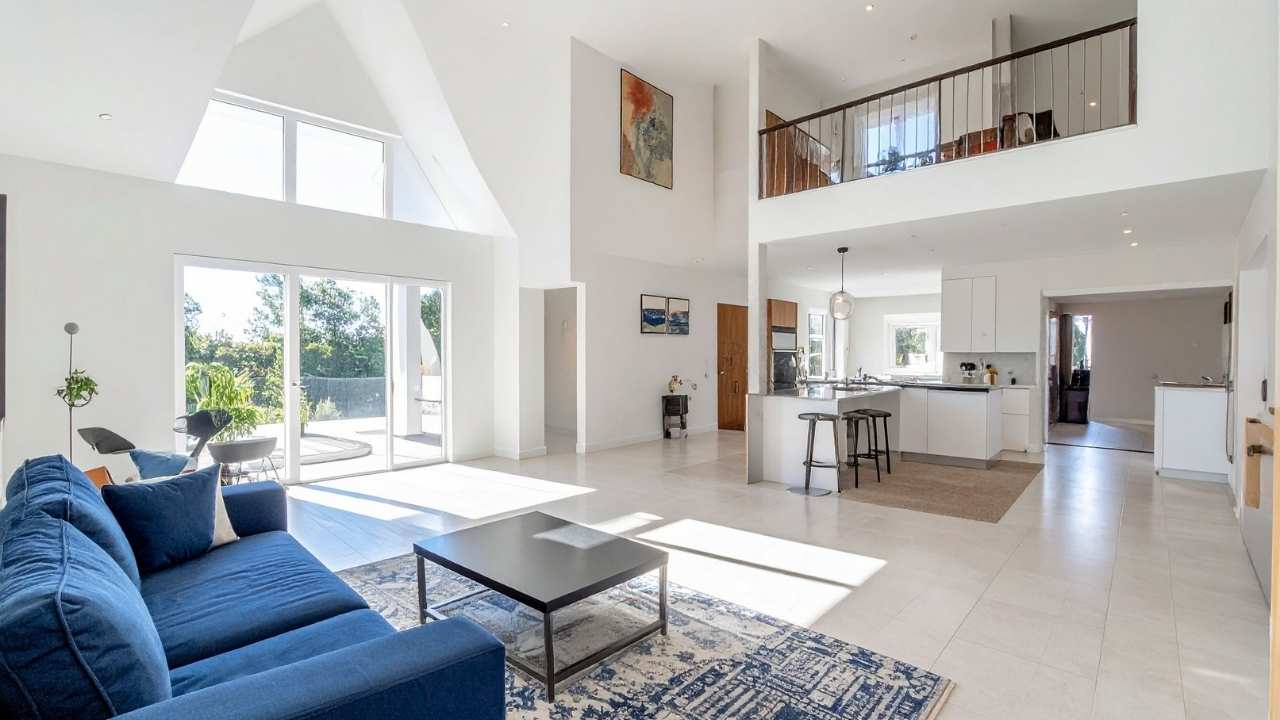Open floor plans changed the way homeowners experience everyday living. Removing walls creates a sense of flow, light, and connection across kitchens, dining rooms, and living areas, allowing for seamless transitions between spaces. Yet, many families eventually realize that completely open layouts can sacrifice privacy and function. Designing a balance between openness and defined zones requires planning, creativity, and architectural awareness.
Understanding the process of remodeling open floor plan spaces helps homeowners create a sense of comfort and structure without compromising the visual appeal of the open space. Thoughtful design techniques, such as layered flooring, lighting, and ceiling details, establish distinct areas while maintaining sightlines and allowing natural light to flow. Whether updating an older home or refreshing a modern space, an open-concept remodel can redefine how every square foot works.
The Evolution of the Open Floor Plan
Open layouts gained popularity in mid-20th-century architecture as families began seeking shared spaces for entertaining and daily life. Kitchens flowed into dining areas, and living rooms extended without physical boundaries. Over time, however, homeowners discovered challenges with noise, storage, and visual clutter.
Modern open floor plan renovation trends focus on preserving the spacious feel while reintroducing subtle divisions to create a more cohesive and inviting space. Instead of rebuilding walls, remodelers use partial dividers, furniture groupings, and varied textures to create a sense of structure and depth. The result blends practicality and style, ensuring that open spaces remain both beautiful and livable.
Understanding the Goals of an Open Floor Plan Remodel
Before starting construction, define the purpose of your remodel. Some homeowners need better organization; others want to improve traffic flow or increase lighting. Each goal influences layout adjustments, materials, and cost.
A split-level open floor plan remodel often includes reconfiguring staircases or aligning ceiling heights to unify multiple levels. In ranch-style or bungalow homes, designers may extend living areas and adjust window placement to bring in more light. Identifying your objectives early ensures each design element supports your daily routine while maintaining a cohesive aesthetic.
Functional Zoning Without Walls
Defining zones is a key challenge when remodeling open-concept floor plans. Instead of physical barriers, consider architectural cues that guide movement and distinguish activities.
- Flooring transitions: Use different materials or patterns to separate dining from lounging areas.
- Ceiling treatments: Coffered or dropped ceilings can define zones without blocking light.
- Furniture arrangement: Sectional sofas, rugs, and shelving units create a sense of invisible boundaries.
- Lighting layers: Pendant lights over dining tables and recessed lighting in living areas build distinction through illumination.
- Color variation: Complementary shades help define unique spaces while maintaining a unified palette.
These strategies shape a functional layout while preserving the sense of openness that defines modern living.
Inspiration from Real Projects
Examining open floor plan remodels before and after transformations provides valuable insight into design potential. Many older homes with small rooms have been reimagined into airy, connected spaces through structural updates and creative finishes.
- In a ranch house remodel open floor plans project, removing partial walls around the kitchen created a seamless cooking and entertaining space, while maintaining cozy dining areas through the use of lighting contrast.
- A bungalow remodel open floor plan transformed a narrow home into a brighter environment by combining the kitchen, breakfast nook, and living area. Distinct flooring textures helped retain definition.
- Homeowners completing a tri-level open floor plan remodel often use railing replacements, step transitions, and furniture placement to unify the levels visually.
Documenting these remodels showcases how strategic design decisions can turn dated layouts into cohesive, comfortable homes.
Design Considerations for Split-Level and Multi-Level Homes
Homes with multiple elevations offer unique opportunities for remodeling. A split-level open floor plan remodel, before and after, typically shows how removing specific partitions increases the flow between the upper and lower sections. However, it also requires attention to structural load-bearing walls, stair placement, and railing design.
Balancing form and safety involves consulting with architects or licensed contractors to ensure that modifications comply with building codes. Lighting placement becomes especially important in multi-level layouts, where shadows and transitions can disrupt visual harmony. With careful planning, these remodels strike a balance between openness and maintaining the architectural character.
Reimagining Specialty Spaces and Basements
Open floor concepts aren’t limited to main living areas. Many homeowners are now exploring how to redesign open floor plans in basement layouts to accommodate entertainment areas, guest suites, or home offices. Removing non-essential partitions creates flexible zones adaptable for different uses over time.
Basement remodels often incorporate moisture-resistant materials, soundproofing, and layered lighting to create a space that feels inviting and comfortable. When paired with defined zones through color or furniture, even below-grade spaces achieve the same cohesive design seen in upper levels of the home.
Blending Style and Function in Modern Open Layouts
The success of remodeling ideas for open floor plan homes hinges on a thoughtful balance. Too much separation defeats the purpose of openness, while too little definition can make spaces feel chaotic. Designers recommend visual rhythm, repetition of materials, colors, or forms, to create a sense of unity and link different zones without monotony.
Open shelving, double-sided fireplaces, and strategically placed columns add subtle definition while reinforcing architectural interest. Innovative storage solutions, such as built-in benches or concealed cabinetry, help maintain order in high-traffic areas. The best designs blend functionality with warmth, ensuring that shared spaces remain personal and purposeful.
Redefine Your Space with AP Advanced Remodeling
At AP Advanced, we understand that transforming an open floor plan takes experience, precision, and creativity. Serving Jacksonville, St. Augustine, Amelia Island, and surrounding Florida communities, our team blends craftsmanship, clear communication, and thoughtful design to create spaces that flow beautifully and function effortlessly.
We remodel all types of homes, from ranch and bungalow to multi-level layouts, helping homeowners reimagine their spaces through lighting, flooring, and custom carpentry that define each area without the need for extra walls.
Our expertise extends beyond open floor plans. We handle a full range of projects, including kitchen and bathroom remodels, home additions, and indoor or outdoor renovations. Regardless of project size, we prioritize quality construction, transparent estimates, and dependable coordination, ensuring every detail enhances both comfort and long-term value.
We deliver open, inviting spaces that feel cohesive, functional, and ideally suited for Florida living.
Creating Harmony Through Thoughtful Design
Open floor remodeling invites creativity and balance. The goal isn’t to rebuild separation but to enhance livability through subtle visual structure. Understanding layout possibilities, material options, and lighting strategies empowers homeowners to transform vast spaces into intimate, purposeful environments.
Whether you’re exploring a split-level open floor plan remodel, a modern open floor plan renovation, or looking to connect spaces in a ranch or bungalow, strategic design ensures that flow and comfort coexist. With professional guidance and careful execution, your open-concept home can evolve into a dynamic space where connection and individuality thrive together.

